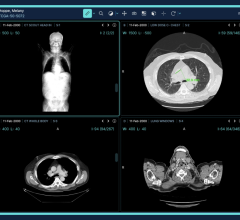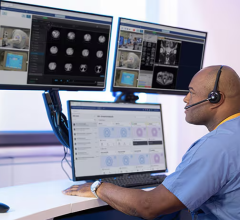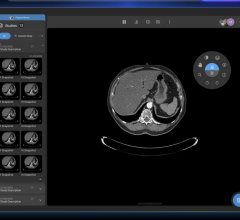
Michael J. Cannavo is a PACS Consultant with more than 20 years of experience in healthcare IT and is on the Imaging Technology News Advisory Board. For more information, please contact the PACS Man at [email protected].
The use of teleradiology reading services is a topic that has equal if not greater impact on radiologists’ future than the DRA does now.
At RSNA ’06, over 20 providers displayed their service offerings, with an equal amount offering teleradiology service providers who were not at the show. For every one company like Nighthawk Radiology Services or Nightrays, who offers an extensive setup of licensed, board-certified radiologists to provide teleradiology services worldwide, there are least 10 other service providers who are not nearly as qualified.
No License Required?
One of the biggest challenges facing teleradiology in the U.S. is that no national teleradiology license is required. There is also no license required for international viewing either. Most states require that the physician have a license in each state where the patient’s physical care is being given. While some states also offer special telemedicine licenses and teleradiology licenses, that is not universal. According to Medlicense.com, a telemedicine and teleradiology licensing firm, Delaware, Hawaii, Idaho, Rhode Island and Wyoming require no license to read via teleradiology; Kentucky, Louisiana and Maryland have partial licensing requirements; while Minnesota, Montana, New Mexico, Ohio, Oregon, Tennessee and Texas require a telemedicine/teleradiology license only. The remaining 35 states require a medical board full license to interpret studies remotely. Obtaining licensure is also a fairly simple process, as most states have reciprocity agreements.
Too Much Room for Interpretation
International teleradiology is another ball of wax. In 2003, a non-U.S. technology giant “tested the waters,” in the words of one of the company’s executives, by using unlicensed radiologists who were not certified by the American Board of Radiology (ABR). The controversial experiment was subsequently suspended, but the potential for such practices remains. Although the ACR presents its teleradiology guidelines, it states that these are not hard and fast rules, and “...are not intended nor should they be used to establish a legal standard of care.”
The technical and logistic hurdles of remote teleradiology have been overcome, and the practice of having radiologists who were trained and credentialed in the U.S. read films overseas is now largely accepted. It seems likely that battles over licensure, credentialing and reimbursement will determine whether providers who were trained and credentialed overseas will be allowed to compete openly with U.S. radiologists. The outcome of these battles will strongly influence the diffusion of international outsourcing to other areas of U.S. medicine. However, definitions from organizations such as the American Medical Informatics Association, the United States Department of Commerce and various state and specialty medical societies on what is considered an out-of-state practice vary considerably, and without standards and regulations in place this puts radiologists and facilities both in serious jeopardy. In addition, the ACR has put together many position papers on the out-of-state practice, yet it is just a statement.
Free, Yet Unequal Market
Many say that the teleradiology services market is a market-driven economy, but to be market driven, all things need to be equal. With teleradiology, it is anything but. Using radiologists who are not licensed nor board-certified in the U.S. is not equal.
Cost Cutting at What Cost?
Many facilities are also looking at teleradiology as an alternative to onsite radiologists as a means of cutting costs. While the mantra may be cost cutting, facilities really need to examine the true cost of “saving a buck,” especially in our litigious culture.
Does the cost of saving $6.00 per CT and $12.50 per MRI per read exceed the cost of potential legal or patient care risks? A facility that does 200,000 exams per year that accepts a 98 percent hit rate on speech recognition needs to factor in inter-reader variability and other risks that are inherent to radiologic interpretation. The same considerations hold true for PACS “freeware,” which, despite the inherent cost benefits offered, will probably be limited to noncritical applications like image viewing by the PCs, at least in the near term. Whether or not this will be used in low cost teleradiology applications remains to be seen, with areas like image compression that also need to be addressed.
While many radiologists are of the opinion that teleradiology offers the benefit of giving imaging facilities access to subspecialty expertise and can help radiologists avoid night call, a significant number consider teleradiology a threat — it will take work away from radiologists, especially at smaller facilities.
There is no room for grey areas when it comes to regulations for the teleradiology industry. All too often in an unregulated industry, cost is a greater consideration than credentials and performance, opening the door to low-wage, uncertified radiologists. Only with set standards, will teleradiology continue to be about quality, risk management and, above all, patient care.
References on ITNonline.net
1. The ACR standards can be found at: http://www.acr.org/s_acr/bin.asp?CID=541&DID=12292&DOC=FILE.PDF.
2. The ACR out-of-state practice position papers: http://www.acr.org/s_acr/doc.asp?CID=541&DID=24137).


 November 06, 2025
November 06, 2025 









